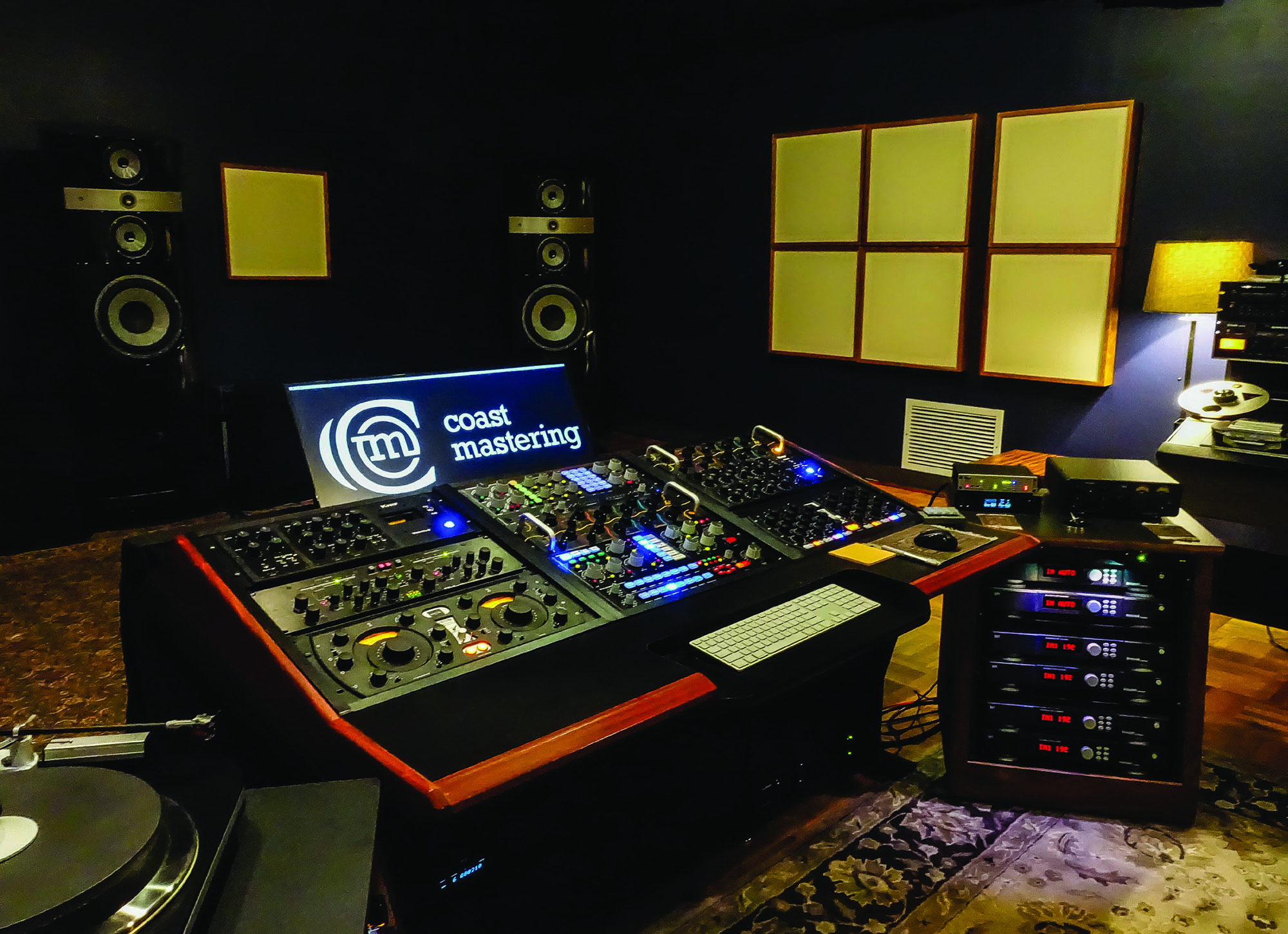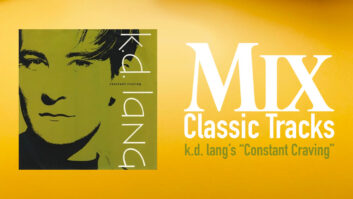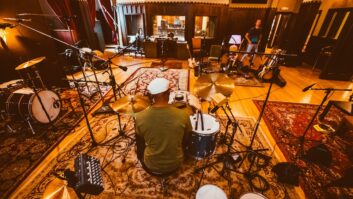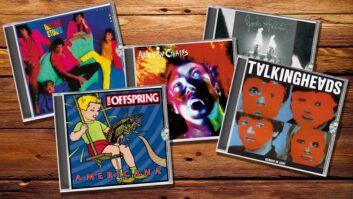
Listening. Its importance cannot be overstated, yet it’s a topic that we don’t actually spend very much time discussing. In the professional audio industry, we talk about new and old gear, software control, tips and tricks, production techniques and countless other aspects of the music-making process. But rarely do we stop to address the fundamental tool in our creative arsenal: Listening. What we hear and how we hear it.
There are many great resources on the mechanics of hearing—how the ear works or how the physiology and components of the ear translate sound waves into electrical impulses that the brain then interprets. But that is not what we are talking about here; the following is more about listening as it relates to perception. But before that, we need to understand that in the making of a record there are different ways to listen.
Three types of engineers contribute different skills in the process of making a song or record. First is the Recording engineer, who makes decisions like microphone choice/placement, et cetera, and commits the sound to some medium to be played back at a later time. Next comes the Mix engineer, who then takes those sounds and balances them, gives them motion or texture, cohesion, etc. And then the Mastering engineer, who works on presentation of the audio, how it shows itself to the world. Is it soft, sharp, dynamic, quiet, flat, salty, blue? Or any of a number other adjectives used to describe what we hear?
For many, this final stage, mastering, remains “mysterious.” It is often referred to as a “Dark Art” ruled by “Golden Ears.” It has been described as magic or voodoo or the sprinkling of fairy dust on records. Yes, mastering engineers often do have very good ears, but there is no real mystery to the process. We do deal with minute adjustments across the audible spectrum, and we help to shape the overall tone and presentation of a musical piece. In essence, there are two sides to mastering, and both are important: the technical and the artistic.
The technical side deals with the delivery of the master to the manufacturer or distributor. It encompasses all of the details necessary to ensure that the very best possible master is what gets released to the world in whatever format required given the type of distribution—CDs, vinyl, lacquer for LP master, hi-res downloads, streaming service, etc.
The artistic side is what most people think of when any discussion of mastering comes up. This is the process of making adjustments to the presentation of the audio to help ensure the best translatability across the infinite number and types of playback situations. It is helping turn a collection of songs in to a body of work.
Given all of the gear that I rely on every day, the most important piece of equipment I have is my playback environment and my ears. For me, it is more of a Zen-like process, one that starts with listening. It is absorbing the presentation of the audio. This is why I firmly believe the mix engineer and the mastering engineer need to be two separate people. Being able to separate the content from the presentation is a very learned skill.
The next step is to then make a decision about how I think it sounds—unbiased. Disconnected from the content, I am not listening to the lyrics, or trying to decide what type of guitar was used with what amp. My biggest question is, “How does it present itself?” When I reach that conclusion, the next step is to decide—usually in consultation with the artist/engineer/producer—how it should or could present itself. All of the in-between decision-making is just trying to find the best way to get from point A to point B. That is mastering.
Back to listening. All of the decisions I make are based on my perception. That is why the playback system is so crucial. If my perception is off, then so are my decisions. So I place a great deal of time and resources into making sure that my playback environment is telling me everything I need to know to make critical adjustments, however tiny they may be. Proper calibration and room tuning (hire a professional) are key. As are things like proper power, speaker and console placement, clocking, etc. All of this is on the physical side. Confidence in the gear gets you that much closer to confidence in your decisions.
Confidence in decision-making is based on confidence in your listening skills. I get asked all of the time when I am teaching classes, giving lectures and talking on panels about how to learn to listen. How do you develop those skills? It takes time, and it takes care, but ears can be trained.
First. Be active with your attention. Listen with intent. Try to identify what you are hearing. For example, pick any song. Pick out an instrument in that song. Describe what you hear. Start simple. and work your way down. Is it up front in the mix? Buried in the back? Left side? Right side? Somewhere in between? Point to where it sounds like it is coming from. Now, is it bright? Dark? Quick? Long? What frequency range does it cover? Does it sound natural? Are there other instruments that have a similar sound or texture that is getting in the way? Are their other sounds that have a similar texture that is additive and support that sound? What sense of space does it have? Near? Far? Dynamic? Flat? Answering all of these questions and so many more help you to actively pay attention. Name your perceptions. Say the words out loud. This will help re-enforce your perception.
And don’t just name your perceptions out loud. Discuss them with other people. Many of today’s engineers, when they were young, got together with friends to listen to music, because that’s what we did. The latest record by a favorite or new band. While an awesome way to socialize around music, it was also a fantastic way to grow a listening experience.
For example, you might be listening to the lyrics when someone points out the sound of the snare. Now your attention has been refocused. You focus in on the snare and now start to identify what it might be that your friend brought to your attention. That then might inform the rhythm in the lyric, informing your original perceptions and altering them.
Sadly, we spend more time now listening in a solo situation, like on headphones or buds, or in a passive environment like background sound while at work. I love listening to music on headphones. I work on music every single day. But for pleasurable listening, I find myself in the secluded environment of my own good headphones as a way to really dig in. Then I will share those perceptions with others when in a group environment.
For many years, I have been hosting listening sessions at the studio where people bring songs to share, continuing to hone our listening skills. I would encourage you to do the same. You will be amazed at your listening growth.
Another question I get is: How can you train yourself to hear those things? Here is what I do. I stop and listen, out in the world. I take a moment wherever I am. I focus my attention on what I hear around me. Then I try to identify what I hear. Same questions as before. What do I hear? Where is it coming from? Is it moving? Does the pitch change as it does? Coming closer? Going further away? What other sounds have similar frequencies? Do they augment or obstruct?
I take this further and often find myself in the (relatively) quiet environment of the night or out in nature and challenge myself to listen for the very smallest details I can hear. Birds, frogs, distant planes, cars miles away, wind, leaves, crickets dominating the mids, etc. And I describe them. This helps me to dig deep into perception. When we talk about high-resolution audio, these are the types of minute details that give space and texture to a track.
The human ear and brain have evolved to be aware of change in sound. The Delta. We tune out those sounds that are static and non-threatening. By learning to focus your attention and recognize not only the Delta but also the static, you will also realize all that is sonically going on around you that you have let go unnoticed.
All of these very subtle things I hear help me to make better decisions in my work. I have said many times that mastering cannot change the mix, only affect the perception of the mix, and it is typically very tiny adjustments that make the biggest difference. Every tiny frequency adjustment meant to help focus attention more on the vocal, for example, also affects every other instrument that has this frequency in the range.
I will be posting ambience recordings from out in the world to give you something to practice listening to. Visit mixonline.com. And in the meantime, go out and practice listening. Focus. Pay attention. Be active. Describe it. Talk about it. Then apply that knowledge to your own work. You will notice that your ear can change.
Michael Romanowski is a Grammy-nominated mastering engineer and the owner of Coast Mastering in Berkeley, Calif.
THE MASTERING VS. MIXING SOAPBOX
One quick comment from atop one of my many soapboxes about mastering: Mastering cannot change the mix, period. It can only affect the perception of the mix. I’ll pause for effect while you grok that. Mix is about balance of the content within itself. When the mix is complete and the audio is now ready for mastering, we get two channels. Left and right. That is it. The same goes for immersive audio such as surround, where again, the delivery is about the number of channels for playback, not the individual tracks for mixing.
You may then ask about delivering stems for mastering. For me, mastering stems is mixing. It says that the mix engineer didn’t complete the job they were hired for and is passing it on to the mastering engineer to complete their work. Now the mastering engineer is required to make decisions about the balance of the mix. before even getting to the deep listening required to make subtle, unbiased and experiential adjustments to the perception of the project.







